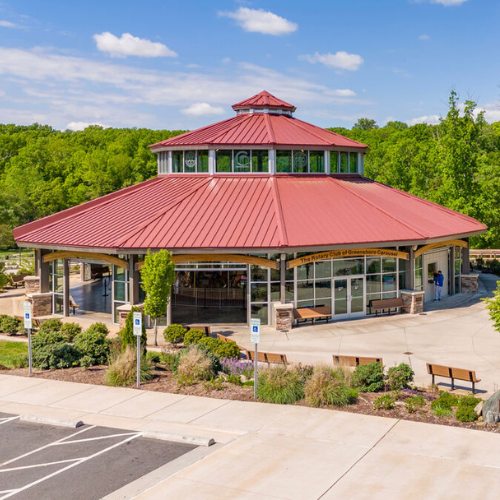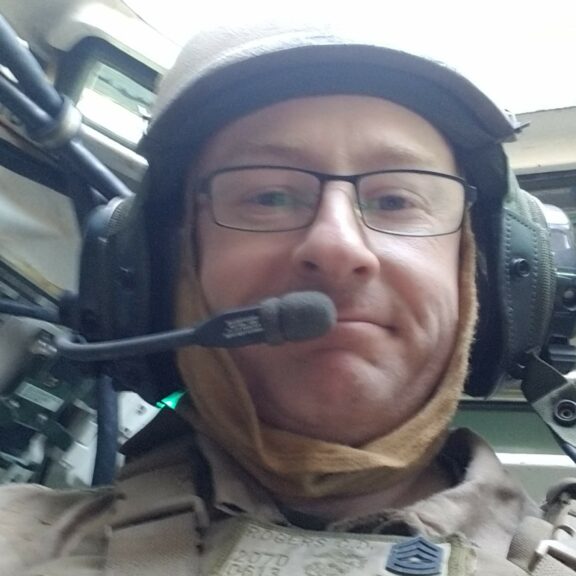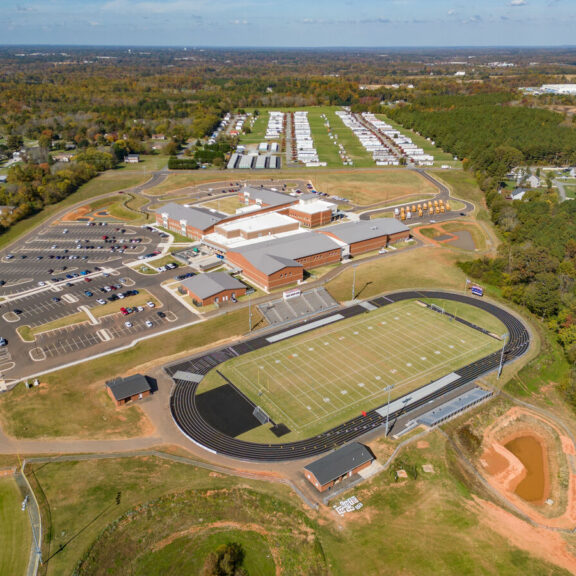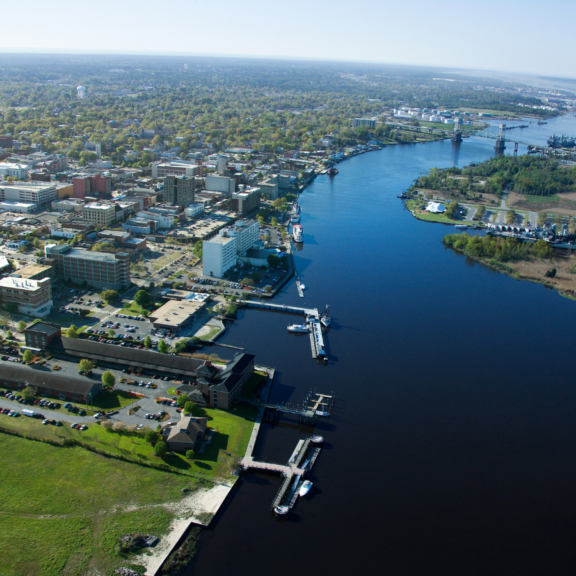As we prepare for the July 4th holiday, we celebrate American heritage and those that declared our independence in 1776. A large reflection of the annual holiday is nationhood, and we often use this time to honor our military and the services its branches provide for American civilians.
The United States military has seven branches of service: The Army, Navy, Air Force, National Guard, Coast Guard, Marine Corps, and the most recently founded Space Force. Timmons Group is grateful for the opportunity to provide engineering, environmental, transportation, surveying, and geospatial technology services to various military branches, and one of our most robust client experiences has been with the North Carolina National Guard.
The National Guard plays a unique role in the military because, unlike other branches, it is controlled dually by both the federal government and individual states. It’s broken down into two components as well, including the Army National Guard and the Air Force National Guard.
The branch is responsible for attending to state emergency declarations like weather-related emergencies, civil unrest, and security detail at borders and airports, and because the National Guard can be controlled separate from the U.S. government (with the state governor acting as commander in chief), each state has its own division. The North Carolina National Guard has contracted Timmons Group to support its statewide efforts since 2016, and that’s amounted to over 40 projects led by a senior project manager on our Raleigh public design team, Frank Slinsky.

Frank is a proactive and detail-oriented civil engineer with 26 years of professional experience in aspects of design and management of site development projects for public sector clients. His fields of specialization include site development, project management, and LEED Certified projects, including those for the military as well as K-12, higher education, and other publicly-funded projects. Frank strives to establish and maintain strong client relationships, which is proven by having earned repeat business from numerous clients, including the North Carolina National Guard.
Frank’s career started in New York City. He and his wife lived in New Jersey after he graduated from New Jersey Institute of Technology with a bachelor’s in civil engineering. Frank commuted into the city by train for three years, and when they decided to have a family, Frank and his wife sought a new home in Richmond, Virginia where they had relatives. He wasn’t involved in the job search too long before finding a fit at Timmons Group. Frank worked at Timmons Group from 1999 to 2011 and Frank rejoined the firm in 2016. Having friends and colleagues at the North Carolina National Guard, Frank brought his work with the National Guard along.
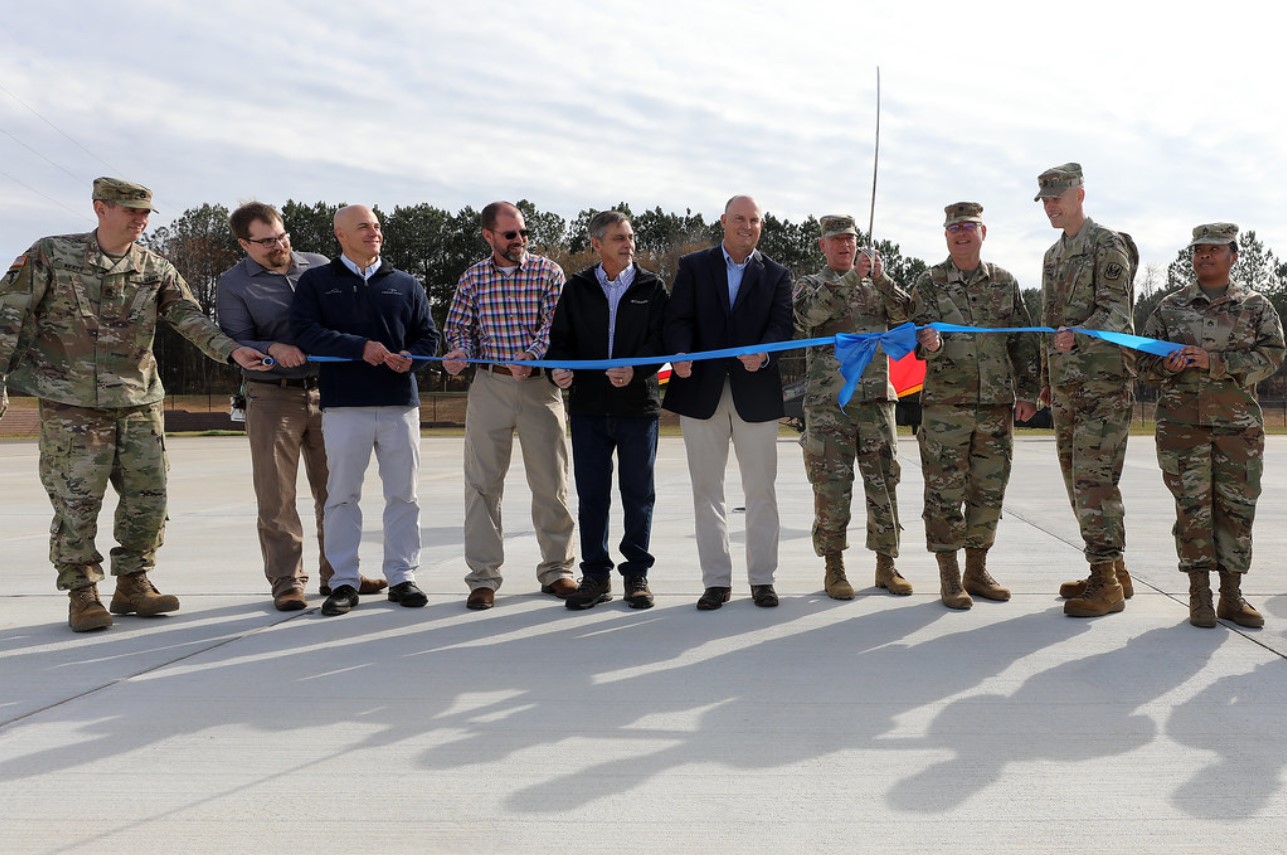
“We are grateful to do nearly all the civil engineering work on National Guard projects. They have sites all over the state, and we go the extra mile to ensure a high level of service and quality on their projects,” Frank said. “The North Carolina National Guard has 111 facilities statewide, which is quite a lot”, Frank said, “We have a wonderful trusting relationship.”
Frank says one of the reasons that he and the National Guard continue to work together is because he and his team strive for standardization throughout their sites, which makes the Guard’s growth and development more manageable on both sides. He works closely with CMFO staff to develop design standards that can be used on all their projects. “The National Guard strives to have the same construction elements on all their sites and buildings,” Frank said. “The standard elements include intuitive site layouts, specific design details and technical specifications, and various elements of antiterrorism force protection.”
These design elements, Frank says, are designed to be long-lasting, low maintenance, and cost effective. This trifecta of standards also help the National Guard ensure that their troops are well protected and can easily maneuver the site when they are prompted to move quickly. “The sites are symmetrical, and they flow well, which allows soldiers to easily understand where they’re supposed to go at a moment’s notice. A lot of the sites are designed the same way, so if a soldier were to visit another facility it would be very user intuitive for them,” he said.
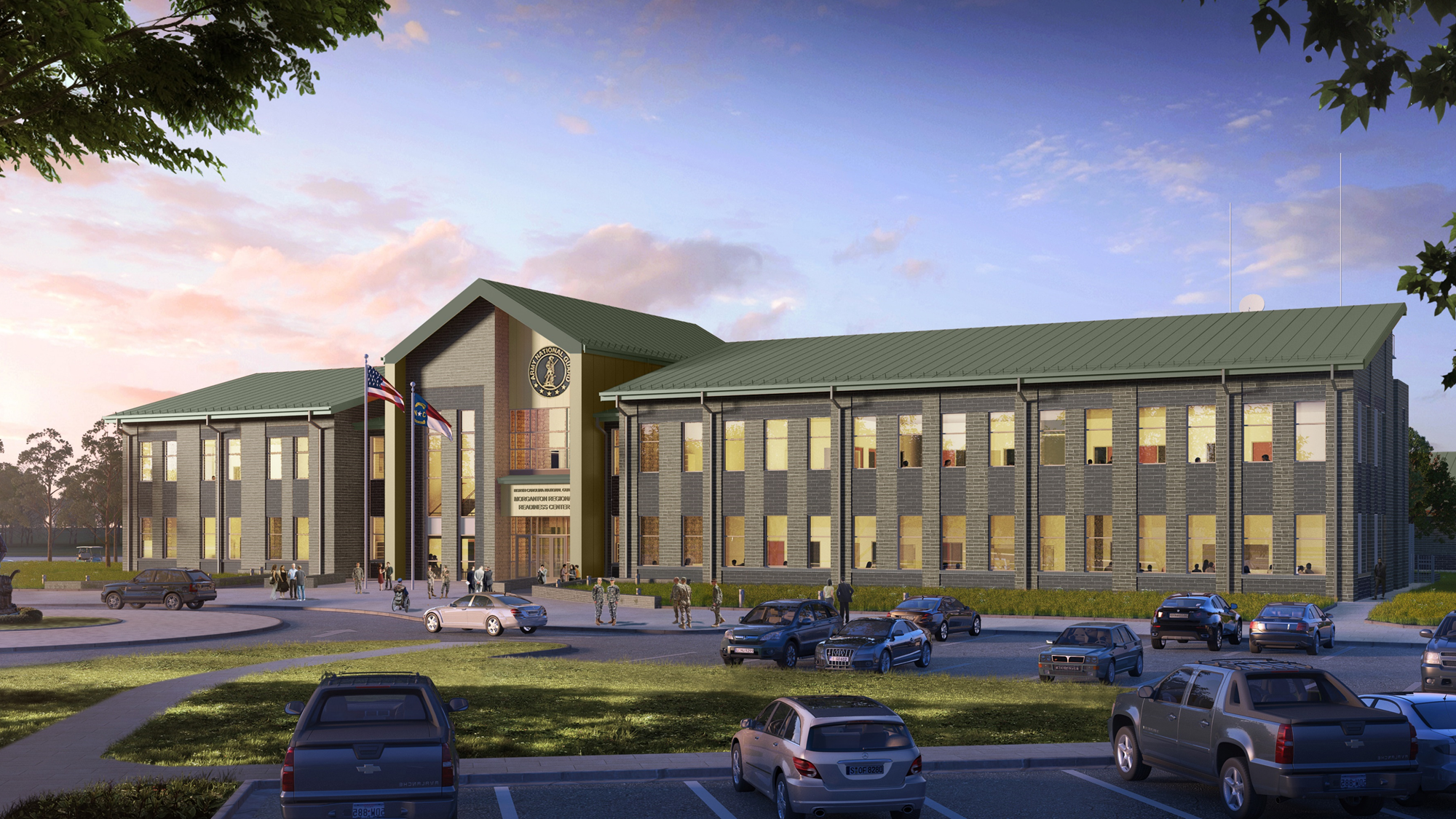
Rendering of Morganton Regional Readiness Center
All these standards are set for a variety of building types, including armories, maintenance shops, readiness centers, storage and training facilities, and even helipads. A recent facility that Frank helped them design is a 5,000-acre master planned site at Camp Butner Training Center outside of Durham.
Though, of all the sites he’s worked with the National Guard to design, Frank says one of his favorites so far is Morganton Regional Readiness Center in Morganton, North Carolina. Frank worked with PFA Architects out of Asheville, North Carolina and Hickory Construction out of Hickory, North Carolina to design the 38-acre site.
One time, Frank rode to the Morganton site in a Black Hawk helicopter to help determine adequate landing areas for aircraft. “That was a really unique experience,” Frank said. The site had a 16-story youth correctional institution on it which was closed in 2013. “As part of the advance planning study, we determined that it wasn’t feasible or efficient to renovate the high-rise into a readiness center, so we imploded it! It was a neat event, but more importantly it was the start of the site becoming an economical and standardized training center that the National Guard will use for many, many years to come.”
When complete, the Morganton Regional Readiness Center will include a 66,000 SF administrative building, an 8,000 SF training building, a 4,500 SF storage building, an entrance drive with a roundabout, guardhouses, a 500 stall POV parking lot, concrete MOV parking lot, and a fallen soldier memorial. The project is slated to be complete in December 2022.
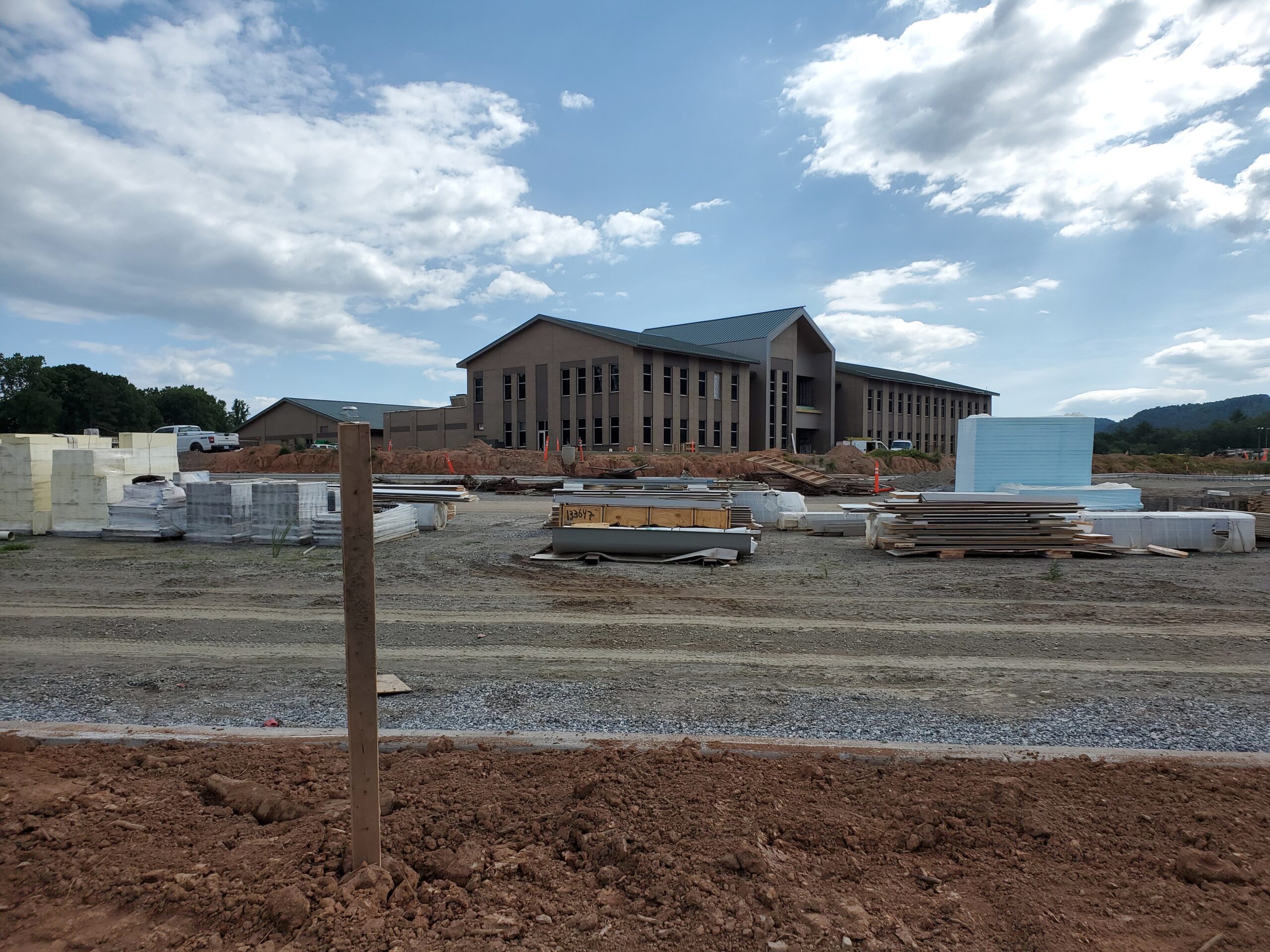
Morganton Regional Readiness Center in progress
In all the unique experiences Frank has had working with the National Guard, he says that consistency, dedication, and transparency are at the root of both his and his client’s goals. “It’s more than just being a civil engineer for them,” Frank said. “It’s about a personal belief in their mission, and deep desire to support our soldiers. We dig deep into the details, take the extra step, and work with CFMO leadership like teammates. We have the same goals, so we work together to enhance their mission.”
It’s obvious that Frank is passionate and proud about his experiences with the National Guard. He is dedicated to serving troops in North Carolina through his work and even has personal ties to his enthusiasm for their mission. “My wife’s grandfather, General Reuben Tucker, was inducted into the 82nd Airborne Museum Hall of Fame at Fort Bragg,” he said. He and his family also do ‘hero workouts’ during military holidays to celebrate and honor those who currently serve, have served, or have given their lives protecting our country.
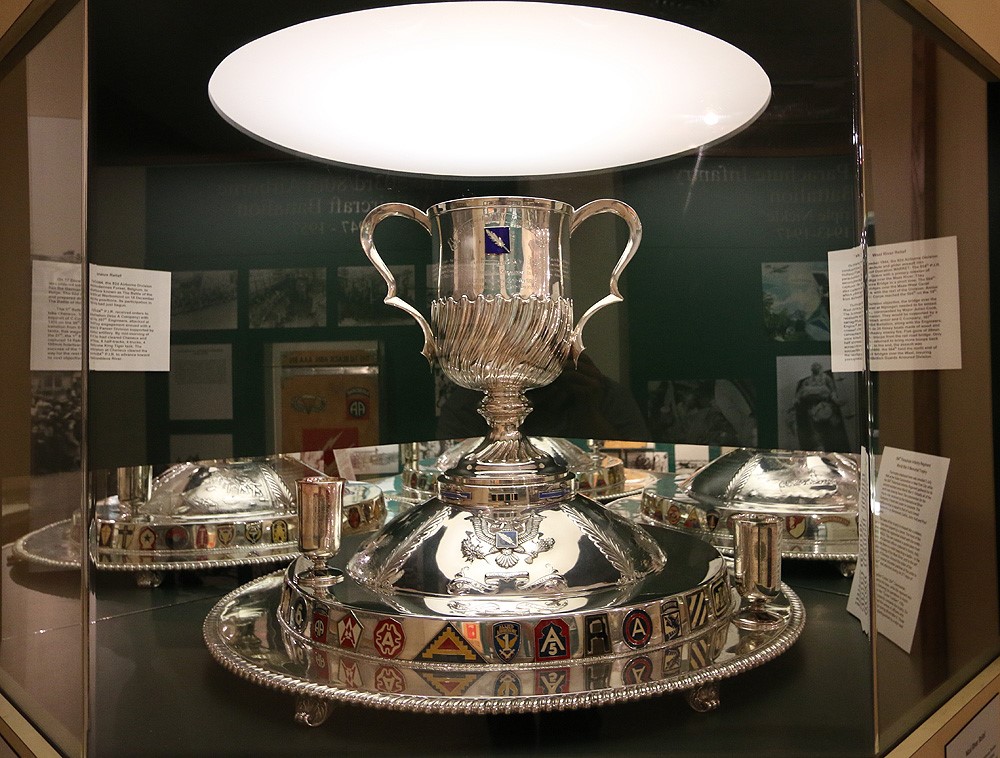
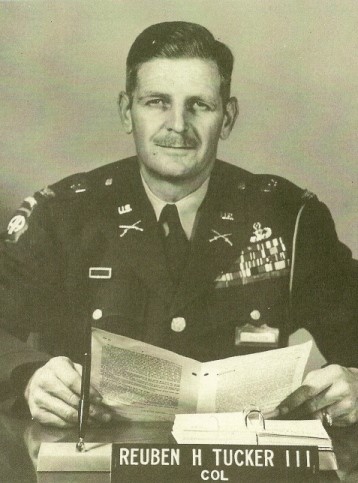
The ‘Tucker Tumbler’ is a memento celebrating Col Reuben H Tucker III, who later became a general after serving in WWII.
Timmons Group is proud to have the opportunity to provide these services to our military branches, and clients like the North Carolina National Guard are at the core of those experiences. We are grateful for the military personnel that help make our everyday lives what we know them to be, and we proudly celebrate their accomplishments, drive, and dedication to our American heritage.
We wish every one of our family members, colleagues, industry partners, and neighbors a happy and safe July 4th.

